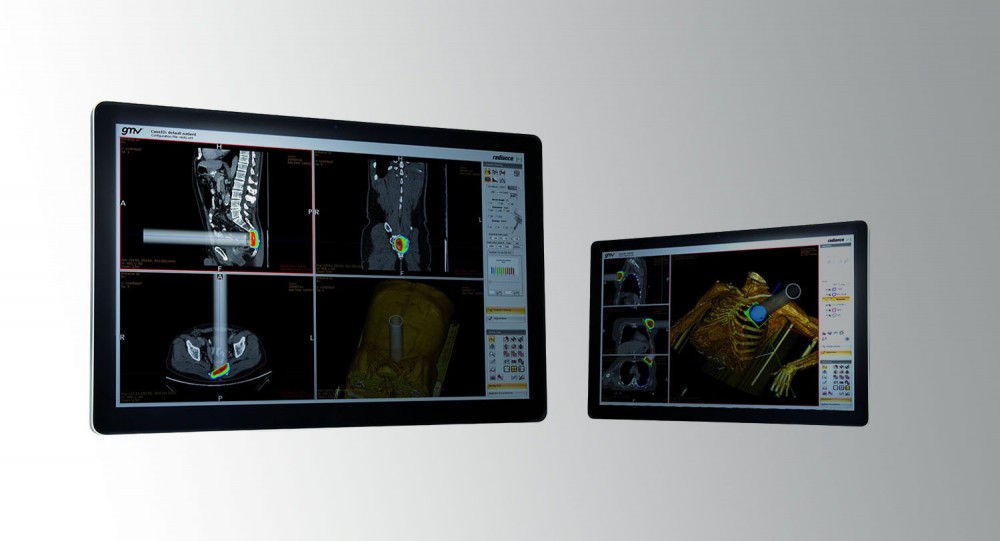IORT, the great unknown
I’ve spoken in my time with many people who are lucky enough not to have suffered cancer – whether friends, relatives or work colleagues – and unless they are health workers themselves they are invariably ignorant of the treatment efficacy of intraoperative radiation therapy (IORT). This prevailing ignorance, together with the tendency to stick with equipment to the bitter end rather than make the replacement outlay earlier, is perhaps the explanation for a strange lack in Spain: few are the hospitals that are running IORT equipment, barely ten in the whole country.

Mulling over this point, I come to the conclusion that people ignorant of the existence of therapy like IORT can hardly be aware either of its benefits. Neither are they likely to be calling for its takeup, even though it indeed has proven to be highly effective in terms of the survival of cancer patients and their quality of life during their treatment.
Only the bad cells are radiated
Intraoperative radiotherapy is administered with great precision to only to the tumor cells or residues. The radiation beam is targeted directly at the zone concerned instead of the more scattergun approach of external radiation. Using IORT, once the tumor has been removed and before the wound is sutured the radiation oncologist administers a single dose that has been previously minutely calculated by the radio physicist on the basis of simulation algorithms that provide priceless information for his or her decision making. Doses can be adjusted to suit each particular patient, ensuring that it is being concentrated on the recurrence-risk zone and ensuring that no organ at risk is affected by an unnecessarily high dose. We are talking here about the GMV-developed IORT planning software, Radiance™.
Intraoperative radiation therapy, targeted so precisely, keeps surrounding healthy tissue safe from the effects of ionizing radiation, minimizing the toxicity to which the whole organism is exposed. The single high dose and pre-surgery simulation have been proven to improve local control of the illness as well as the survival rate in diverse primary or locally recurrent neoplasms.
For a certain type of treatment or specific cases, moreover, IORT can be administered as a single radiotherapy treatment, saving patients from subsequent outpatient visits or overnight hospital stays (broken down in detail in the report drawn up by the Spanish Cancer Association –Asociación Española contra el Cáncer- and the Spanish Radiation Oncology Society –Sociedad Española de Oncología Radioterápica-). This has a crucial and positive knock-on effect on those patients’ mental and physical wellbeing and their economic and working situation; it also reduces side effects. In the current COVID19 pandemic minimizing hospital visits is obviously a hugely important part of reducing the population’s contagion risk.
Tried and tested results
The TARGIT clinical trial has been looking at IORT-treated patient trends for specific tumors such as breast cancer in the twelve years following treatment. It shows that the death rate from non-tumor related illnesses is lower. When tackling primary colorectal cancer, moreover, and also advanced recurrent carcinoma, the three-year study conducted by the Mayo Clinic – a flagship US cancer treatment center – shows that IORT outperforms external radiotherapy in terms of local control at 3 years and the global survival rate over this same period of time for patients with locally advanced tumors. Last but not least, a multi-hospital study carried out Mannheim Hospital (Germany), now in phase III, is throwing up hopeful results for patients with tumors as aggressive as glioblastoma multiforme. This research shows that IORT can significantly increase the survival rate.
IORT also helps to reduce the relapse risk in a good number of tumors, such as brain tumors, rectum cancer, sarcomas and breast cancer, while its palliative value is important too in difficult-to-treat cancers like pancreatic cancer or in any relapses that might eventually occur.
Unlike other comparable countries there is no legal obligation in Spain to renew medical equipment every ten years. According to the report Perfil tecnológico hospitalario y propuestas para la renovación de tecnologías sanitarias (Hospital technological profile and healthcare technology renewal proposals) drawn up by the Spanish Healthcare Technology Federation (Federación Española de Empresas de Tecnología Sanitaria: FENIN) with the collaboration of companies from the technology and clinical information systems sector, 50% of Spanish hospitals’ technological equipment is over ten years old; this figure soars to 61% in the case of radiology.
The older versions of this radiology equipment, called linear accelerators, are bulky and have to be housed in concrete bunkers, often in the hospital basement. On the contrary the new generations of smaller, low-radiation equipment, such as Intrabeam, or a self-shielded accelerator like Mobetron, can be safely kept in the operating theaters themselves. IORT treatment can thus be extended to hospitals not actually fitted with radiotherapy equipment but supported by bigger hospitals that are so equipped.
The trouble is, as already pointed out, that takeup of the abovementioned more modern equipment is low in Spain. There is still a need for an enormous effort of coordination and synchronization to move operated patients down to the bunker to be radiated before suturing the wound. All this explains why IORT takeup is much lower than it should be in Spain.
The overarching aim of these reflections is to bring the advantages of IORT to much wider notice. The ideal situation would be for all patients needing this treatment to have access to it. For this to happen there needs to be a systematic policy of renewing and updating the linear accelerators of Spain’s hospitals. Even more ambitiously, legislation should be brought it to oblige hospitals to renew their technological equipment every ten years.
Author: Maole Cerezo.